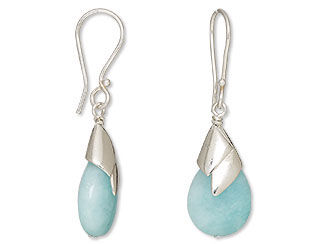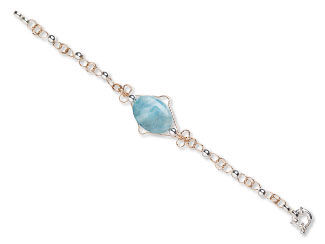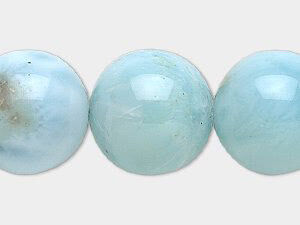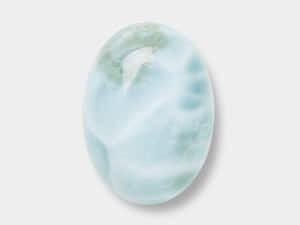Larimar Meaning and Properties
Larimar History
Dreamy, mesmerizing larimar is known by different names:
- "Dolphin stone" for the charming and intelligent ocean creature
- "Caribbean gemstone" for its waves of ocean-blue color reminiscent of the waters near the Dominican Republic beach where it is found
- "Atlantis stone" for the legend that the Dominican Republic now stands where the legendary City of Atlantis fell
Larimar was reportedly discovered in 1916 by Father Miguel Domingo Fuertes Loren, but wasn't mined until decades later, when in 1974, Dominican Miguel Méndez and Peace Corps volunteer Norman Rilling noticed a piece of larimar on the Barahona province shoreline. Named for Miguel's daughter, Larissa, and "mar," the Spanish word for "sea," larimar captures the exquisite beauty of the Caribbean Sea.
Larimar Metaphysical Properties
Edgar Cayce, the most documented psychic of the 20th century and a man known as the "sleeping prophet,'' once predicted that part of Atlantis would be discovered in the Caribbean. In addition, he indicated that a blue stone with extraordinary healing powers would be found there.
Larimar is commonly believed to be a calming stone, offering many incredible healing powers. It is considered by some to aid in communication and is associated with the crown, heart, third eye and throat chakras. Many alternative and holistic healers use larimar for a variety of physical, emotional and spiritual healing practices. Larimar promotes relaxation in the wearer and can be used as a worry stone. Worry stones are smooth, polished gemstones typically in the shape of an oval which, when gently rubbed between the thumb and pointer finger, are said to create a soothing sensation.
Larimar Geological Properties
Larimar is a rare blue variety of pectolite. The serene blue color is the result of the substitution of copper for calcium in the stone. The color can present as various shades of blue, green, and purple from a very pale, nearly white hue, to very dark green, violet and indigo. Most of Fire Mountain Gems and Beads larimar is between pale and mid-tone hues. With swirling bands of white, larimar mimics the wave crests of crystal blue Caribbean waters.
To date, the only known major deposits of larimar are found in the Dominican Republic, where it was most likely treasured by the area's first inhabitants, the Taino Indians. The only known major larimar mine is in this remote, mountainous location in the Dominican province of Barahona, where locals still mine the stone from narrow crevices using primitive hand tools. Other forms of pectolite can be found in the United States and Canada.
|
|
|
|
|
|
|
|
|
|
|
|
|
|
|
|
|
|
Proper Care of Larimar
As larimar is a soft stone, rough handling, heat, radiation and chemicals should be avoided. It is for this reason designers tend to use larimar in necklace and earring designs over bracelets and rings to help avoid unnecessary impact that can cause damage to the stone. To clean larimar, use warm, soapy water and dry thoroughly. Steamers and ultrasonic cleaners should be avoided. Store larimar away from harder stones and other materials that could cause dents and other surface imperfections. A soft pouch is recommended.
Designing with Larimar
Many jewelry artists incorporate polished freeform larimar pendants and cabochons into necklaces and create earrings with larimar rounds and chips. Freeform larimar stones can be used in wire-wrapped designs such as necklaces, rings, bracelets and earrings. Commonly seen paired with sterling silver, larimar gemstones are equally as gorgeous when paired with gold, copper and antiqued metals.
A Few Design Inspirations to Get You Started
Shop for Larimar
**Please note that all metaphysical or healing properties listed are collected from various sources. This information is offered as a service and not meant to treat medical conditions. Fire Mountain Gems and Beads® does not guarantee the validity of any of these statements.
How did you like this resource? Your feedback helps us provide resources that matter to you most.
Copyright Permissions
All works of authorship (articles, videos, tutorials and other creative works) are from the Fire Mountain Gems and Beads® Collection, and permission to copy is granted for non-commercial educational purposes only. All other reproduction requires written permission. For more information, please email copyrightpermission@firemtn.com.





